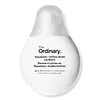What's inside
What's inside
 Key Ingredients
Key Ingredients

 Benefits
Benefits

 Concerns
Concerns

No concerns
 Ingredients Side-by-side
Ingredients Side-by-side

Squalane
EmollientSorbitan Olivate
EmulsifyingWater
Skin ConditioningTrihydroxystearin
Skin ConditioningBetaine
HumectantJojoba Esters
EmollientHelianthus Annuus Seed Wax
Skin ConditioningSodium PCA
HumectantPCA
HumectantSerine
MaskingAlanine
MaskingArginine
MaskingProline
Skin ConditioningGlycine
BufferingGlutamic Acid
HumectantLysine Hcl
Skin ConditioningThreonine
Sodium Lactate
BufferingAdansonia Digitata Seed Oil
EmollientCaprylic/Capric Triglyceride
MaskingAcacia Decurrens Flower Wax
EmollientPolyglycerin-3
HumectantHydroxymethoxyphenyl Decanone
Skin ConditioningTocopherol
AntioxidantCalcium Gluconate
HumectantGluconolactone
Skin ConditioningSodium Benzoate
MaskingSqualane, Sorbitan Olivate, Water, Trihydroxystearin, Betaine, Jojoba Esters, Helianthus Annuus Seed Wax, Sodium PCA, PCA, Serine, Alanine, Arginine, Proline, Glycine, Glutamic Acid, Lysine Hcl, Threonine, Sodium Lactate, Adansonia Digitata Seed Oil, Caprylic/Capric Triglyceride, Acacia Decurrens Flower Wax, Polyglycerin-3, Hydroxymethoxyphenyl Decanone, Tocopherol, Calcium Gluconate, Gluconolactone, Sodium Benzoate
 Reviews
Reviews

Ingredients Explained
These ingredients are found in both products.
Ingredients higher up in an ingredient list are typically present in a larger amount.
This ingredient is an emollient, solvent, and texture enhancer. It is considered a skin-softener by helping the skin prevent moisture loss.
It helps thicken a product's formula and makes it easier to spread by dissolving clumping compounds.
Caprylic Triglyceride is made by combining glycerin with coconut oil, forming a clear liquid.
While there is an assumption Caprylic Triglyceride can clog pores due to it being derived from coconut oil, there is no research supporting this.
Learn more about Caprylic/Capric Triglyceride